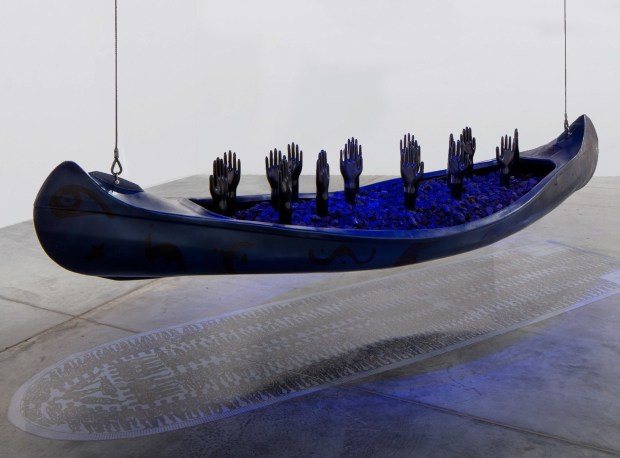

Interviewed by Guy Trebay
Being raised during the Depression, we all learned to be creative with what we had on hand. At Christmas or on my birthday, I always got art supplies, and I was jealous that my siblings got bikes and stuff. I realize now that my parents were fostering my creativity.
An early influence on my becoming an artist was Simon Rodia. My grandmother lived in Watts, and we would walk by the Watts Towers when they were being built. I was fascinated by how he used bottle caps and corn cobs and broken plates — trash, essentially — to make art, to make something beautiful. Then, much later, in the 1960s, I saw the work of Joseph Cornell. He refined the use of found objects and materials and boxes, and I thought, “Wow, I’ve kind of been doing that, too.” I didn’t know it was called assemblage, but it made sense to me and set me in that direction as an artist.
The main challenge, I guess, to being an artist is how to make a living. But being a creative person means you have to find ways to do this. I studied design at U.C.L.A., and after I graduated, I made greeting cards, I made jewelry, I got into printmaking and then sold my prints. I taught art classes in colleges all over the states. My creativity kept evolving with my needs as I got married and bought a house, had my daughters and put them through college. Through it all, I loved making art. It kept me going.
I still want to make art. Sometimes in the morning when I wake up, it’s hard to get out of bed, hard to get back into my body and get it to move. But I do it. Not everyone has a reason to get out of bed, something they love to do and that gives their life meaning. I am so lucky that I have that as part of my life. I don’t really think about my age, unless someone mentions it, though I guess I feel middle-aged — which for me is, like, 50 to 70. It would be kind of neat to live to 100, to have 100 revolutions around the sun. I’m pretty close.
Photo by Kayla James for The New York Times